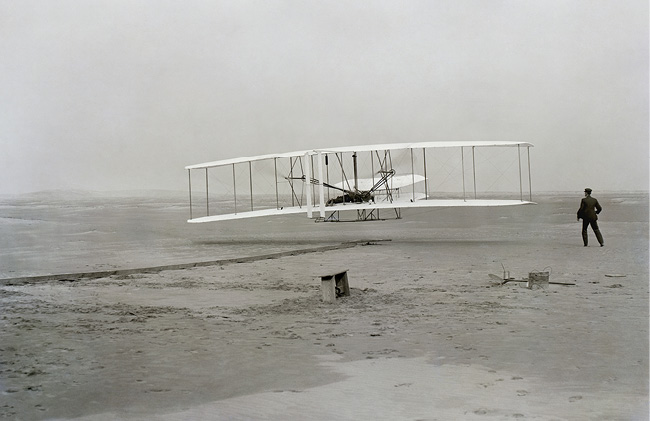Title Page
101 AMAZING FACTS ABOUT PLANES
Jack Goldstein
Publisher Information
Published in 2014 by
Andrews UK Limited
www.andrewsuk.com
The right of Jack Goldstein to be identified as the author of this work has been asserted by him in accordance with the Copyright, Designs and Patents Act 1998
Copyright 2014 Jack Goldstein
All rights reserved. No part of this publication may be reproduced, stored in a retrieval system, or transmitted, in any form or by any means without the prior written permission of the publisher, nor be otherwise circulated in any form of binding or cover other than that in which it is published and without a similar condition being imposed on the subsequent purchaser. Any person who does so may be liable to criminal prosecution and civil claims for damages.
All facts contained within this book have been researched from reputable sources. If any information is found to be false, please contact the publishers, who will be happy to make corrections for future editions.
Introduction
Do you know which way round a countrys flag is placed on an airplanes tail? How about what Qantas stands for? What are the twenty most iconic planes of all time? And what happened to the man who successfully glided from a tower in China in the year 559 AD? This fantastic quick-read eBook features 101 amazing facts about planes, split into categories such as the history of flight, world records, the most amazing facts and many more. So if you want to know who owns the most expensive private jet in the world, or what is particularly unusual about the photographs of the Wright brothers first flight, then this is the book for you. Find the information you want, fast!
Follow Jack Goldstein on Twitter @GoldsteinBooks
Visit Goldstein Books at www.jackgoldsteinbooks.com
General Facts
- Only 5% of the worlds population have ever been on an airplane.
- Whilst it might seem youre flying high above the world when youre in a commercial jet, its not really that high up in the big scheme of things. If you were to shrink the earth down to the size of an average 30cm diameter globe you would have in a classroom or home, then the planes would only be flying two millimetres above the surface!
- Commercial flights that are under 8 hours require two pilots, with those between 8 and 12 hours requiring three. Those longer than 12 hours actually require four pilots, who will generally fly three or four hour shifts.
- Airplanes are regularly struck by lightning, and although this can very occasionally cause problems, most modern aircraft are designed to cope with the phenomenon.
- If you are a nervous flyer, you may want to book a morning flight. This is because as the day progresses, the chances of both turbulence and thunderstorms increase!
- When aviation fuel is burned, it produces carbon dioxide and water. When the water is expelled at altitude, it quickly turns to droplets or even ice crystals - these are the vapour trails that you see behind a plane flying high above. If you look closely, theres always a gap between the plane and the trail - this is because it takes a short amount of time for the droplets or crystals to form as the water is expelled in the form of gas at a temperature of about 1300 degrees Celsius!
- Dont worry if you look out of the window and see a planes wings wobbling! They are designed to flex, and can safely move up and down more than three metres. When Boeings latest plane - the 787 Dreamliner - was tested, the wings were flexed eight whole metres!
- Tea can taste unusual in a plane because the lower pressure inside the aircraft when it is at altitude means that water boils at a temperature ten degrees lower than normal. This means that the tea leaves are not reacting in the same way they would do at normal air pressure, and therefore the taste is different!
- The typical take-off speed of a modern commercial jet is around 150mph.
- The first non-stop transatlantic flight was made by John Alcock and Arthur Brown in June 1919.

Supermarine Spitfire
Iconic Planes - Part 1
- Lockheed SR-71 Blackbird - cold war spy plane which holds the record for the fastest flight of any aircraft with standard take-off and landing procedures.
- Concorde - distinctive and beautiful supersonic airliner, sadly retired in 2003 when it became too expensive to maintain.
- Harrier Jump Jet - the most successful plane capable of vertical take-off.
- Lockheed P-38 Lightning - distinctive twin-boom fighter used to great success in the Pacific Theater during WWII.
- Lockheed C-130 Hercules - having seen more than 50 years of active service with military forces across the world, the Hercules is known as a true workhorse of the skies.
- Wright Flyer - the first successful powered aircraft, designed and built by Orville and Wilbur Wright.
- Northrop Grumman B-2 Spirit - stealth bomber capable of dropping nuclear bombs whilst almost completely avoiding detection.
- Supermarine Spitfire - high-performance WWII fighter which helped the allies win the Battle of Britain, a major turning point in the war.
- Sopwith Camel - most successful aircraft of the first world war, having shot down 1294 enemy aircraft between 1914 and 1918.
- Douglas DC-3 - introduced in the 1930s, this long-range airliner revolutionized the transport industry and is still used in some countries today!

Wright Flyer
The History of Flight
- Humans have always been fascinated with flying, and have spent thousands of years trying to get up into the sky with the birds - of course, it is only in our very recent history that we have achieved this.
- The very first form of human-made flying objects were kites. We believe that the first kites were flown in China in around 200BC, where we have records of one being flown above enemy territory to calculate how long a tunnel needed to be to reach it.
- In 559, Chinese prisoners were used in experimental glider flight from a tall tower, using a kite-like design. Although most of them died as they fell from the tower with no control over their flying machines, one man - Yuan Huangtou - actually managed to glide safely from the tower and over the city walls. However, he was then captured and executed.
- In around 1010 AD, a Benedictine monk named Eilmer of Malmesbury used a glider to fly some 200 metres, but sustained injuries on landing. The event is recorded by a monk from the same abbey, who interviewed direct witnesses of the event. We thus believe this astonishing early flying feat to be true, and it is thought to be the first recorded manned unpowered flight in Europe.
- In the fifteenth century, Leonardo da Vinci created designs for a number of machines and structures that we know today were likely to have been able to fly (or at least glide), however to the best of our knowledge, he never actually constructed examples of them.
- On the 19 th of October 1783 in Paris, the Montgolfier brothers successfully launched the first manned flight of the modern era using a tethered hot air balloon. They had previously, on the 4 th of June the same year, demonstrated the hot air balloon principle (although on that occasion the balloon was unmanned). This is considered to be the single event that began our current era of air travel.
- Hot air balloons were further developed into rigid airships using lighter-than-air gases such as hydrogen. These were hugely successful and incredible examples such as the Zeppelin companys Hindenburg class (three times longer than a jumbo jet) introduced the world to luxury air travel for the first time. However, when one of the companys flagships - the LZ 129 Hindenburg - caught fire whilst landing in New Jersey, confidence in the mode of transportation was lost, and the event marked the end of the giant airship era.
Next page







